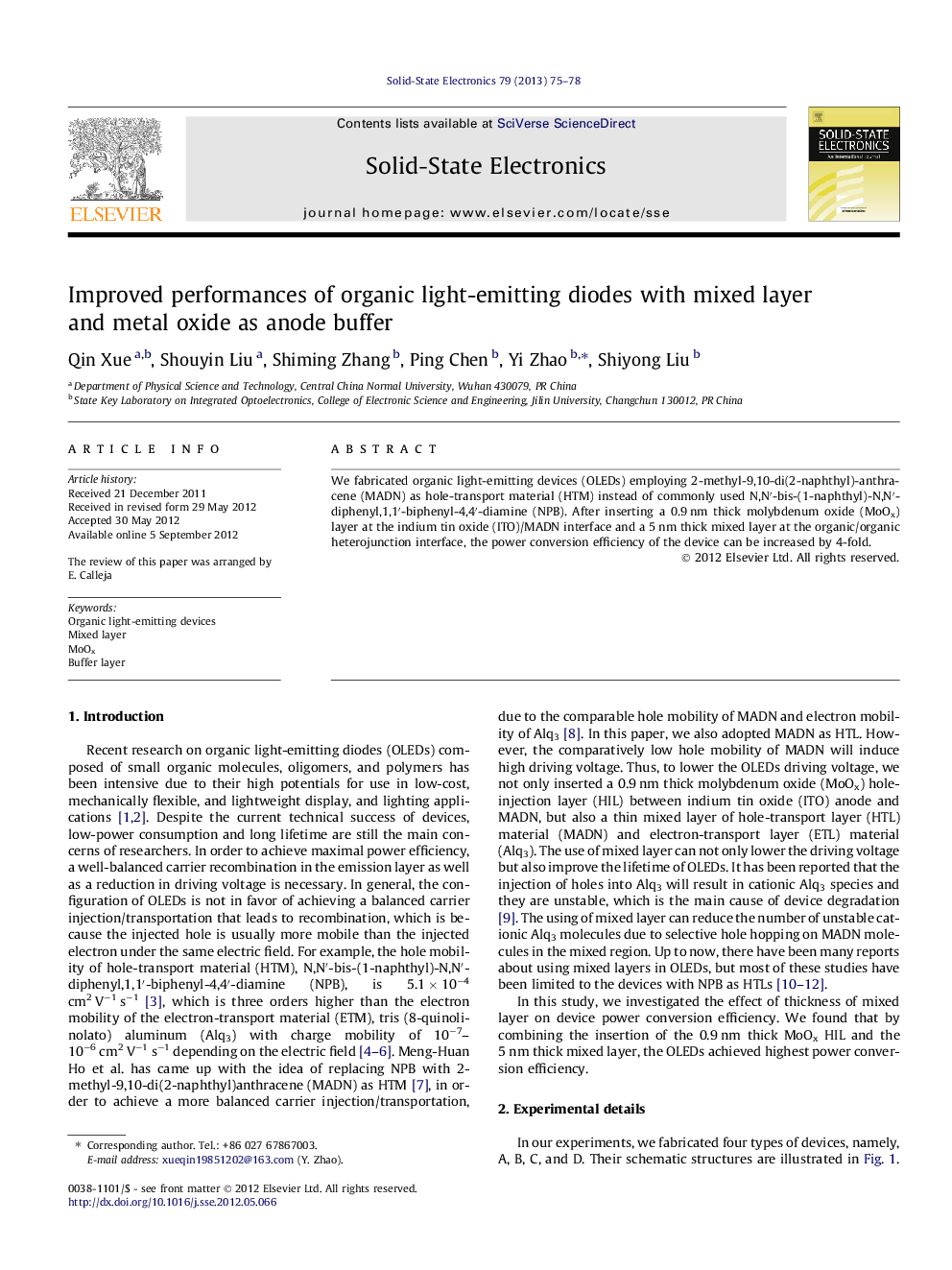| Article ID | Journal | Published Year | Pages | File Type |
|---|---|---|---|---|
| 748436 | Solid-State Electronics | 2013 | 4 Pages |
We fabricated organic light-emitting devices (OLEDs) employing 2-methyl-9,10-di(2-naphthyl)-anthracene (MADN) as hole-transport material (HTM) instead of commonly used N,N′-bis-(1-naphthyl)-N,N′-diphenyl,1,1′-biphenyl-4,4′-diamine (NPB). After inserting a 0.9 nm thick molybdenum oxide (MoOx) layer at the indium tin oxide (ITO)/MADN interface and a 5 nm thick mixed layer at the organic/organic heterojunction interface, the power conversion efficiency of the device can be increased by 4-fold.
► We replaced NPB with MADN as HTM in OLEDs, in order to obtain high current efficiency. ► We inserted both thin MoOx and mixed layers in the OLEDs in order to reduce the driving voltage. ► Other color OLEDs with high power efficiency can also be obtained by this method.
